 For this podcast, it is with joy and honor to be joined by a brilliant and competent CEO and author, Rhamy Alejeal.
For this podcast, it is with joy and honor to be joined by a brilliant and competent CEO and author, Rhamy Alejeal.
Rhamy, along with his wife, owns People Processes, a provider of integrated, automated HR processes. It helps hundreds of companies across the US to learn how to stop pushing paper and start prioritizing people. Rhamy also serves on the Federal Reserve’s Industry Council on Healthcare, providing insights into employer costs and how they affect businesses in today’s marketplace.
With his expertise , he also turned their company’s concept on to a book entitled People Processes: How Your People Can Be Your Organization’s Competitive Advantage. Rhamy lays out the steps for optimizing procedures such as onboarding, scheduling, payroll, reporting, compliance, and communication to address problems like unmotivated employees, poor performance, high turnover, among others.
If you want to know more about Rhamy and his amazing works, you may visit their website by clicking here.
I hope you enjoy this engaging interview with Rhamy Alejeal. Happy listening!
THE BOOK
People Processes reveals how you can use technology to streamline your personnel operations. Taking you through every component of HR workflow, Rhamy Alejeal lays out the steps for optimizing rote procedures such as onboarding, scheduling, payroll, reporting, compliance, and communication. You’ll learn how to make the needed changes and, even better, discover what the employee experience looks like after you do.
THE AUTHOR
Rhamy, along with his wife, owns People Processes, a provider of integrated, automated HR processes. It helps hundreds of companies across the US to learn how to stop pushing paper and start prioritizing people. Rhamy also serves on the Federal Reserve’s Industry Council on Healthcare, providing insights into employer costs and how they affect businesses in today’s marketplace.
You may also refer to the transcripts below for the full transcription (not edited) of the interview.
Greg Voisen
Welcome back to Inside Personal Growth. This is Greg Voisen and the host of Inside Personal Growth. And we have Rhamy Alejeal joining us and he's joining us from Memphis, Tennessee. Rhamy, Good day to you. How are you?
Rhamy Alejeal
Good day, Greg. I'm doing great. I appreciate you having me on.
Greg Voisen
Well, it's a pleasure having you on and you know, People Processes is really a challenge for most companies and most HR directors and CEOs and CEOs. And especially during this pandemic time, it's been really challenging, not only finding the labor, but keeping the labor. And today we're going to be talking about a lot of those issues, and how Rhamy helps people get through that to the other side, and makes it so much easier for him. And if you want to learn more about Rhamy and his company, go to people processes.com It's just like it sounds p e o p le, p-r-o-c-e-s-s-e-s.com. There you can learn more about his company, his solutions, what he provides for his clients nationwide. And Rhamy, I'm gonna tell my listeners just a little bit about you. Romea, Gao found German people processes, a provider of integrated automated HR systems on October 1 2009, Rama and his team worked with hundreds of companies across the United States, helping them learn how to stop pushing paper and start prioritizing people. I love that. In addition, Rhamy serves on the Federal Reserve's Industry Council on healthcare providing insights into employer costs, and how they affect businesses in today's marketplace. He holds a bachelor's degree in finance, economics, and an MBA with a focus on economics. And we're talking today about his new book, can you hold that up? People processes, there you go. It's a number one best seller in Amazon, under the HR category, and one of Inc. dot coms top 10 leadership books that you can get. And again, we'll put a link to Amazon to get this book, we'll also put a link to Romney's website, while running to set the stage for the interview. Can you tell our listeners a little bit about yourself? How did you get into the world of HR, and what's the greatest lesson that you learned from people and processes because every day your team, you have to deal with complex issues, but you help people simplify it and make it easier in their life. So tell us a little bit about yourself and how you and your team do that?
Rhamy Alejeal
Well, like any good HR person there, I was five years old Halloween, I dressed up as an HR person, you know, with a checklist and a funny hat. No, no one ever winds up in this career. You know, I wanted to be an astronaut. And this This is where I wound up. But I over the years, I was very entrepreneurial. I started young building businesses, growing businesses. And the bottleneck that most small businesses had, that were marginally successful, I'd say the truth is, most small businesses fail, because they have a crap product. They don't know what they're doing. They, they have a problem, right? That's the first step is don't suck at your job. And that's a, that's a hard enough lift for many people. But once you get through that, and you start creating standard operating procedures, and you start building out a team who's supposed to follow those items where I saw, the most bottleneck was in that realm of people, and management. And that's what attracted me to it. It's a big problem. And I wanted to help solve that. My wife and I started this company together 12 years ago, fresh out of graduate school. And we have focused on various parts of it from, you know, insurance and compensation benefits analysis, that kind of world thinking that the answer to getting good people was providing a great compensation package, as part of it, to investing in purchasing companies that were in the realm of payroll time off management time, and labor, timekeeping, thinking, Oh, it's not just having a great package, you also have to have a great, you know, software experience, and that's part of it too. But over the years that's developed really into a full suite of HR, that's not just the tools, and not just the information, but also the culture, the performance management, the pieces needed to really remove people as a bottleneck as best you can inside the organizations
Greg Voisen
Did either you have your wife, I mean, usually when you get people that are working in organizational development, cultural transformation, this kind of area, they had an interest to go into psychology, where either you weren't because you came from a financial background, but what was it that kind of intrigued you both Muzo psychotic, the softer side, they call it the soft side? You know? People say, hey, in my balance sheet, my biggest asset are my people. But what is the actual cost of having those people? I know you deal with turnover rates, you deal with retention issues, you deal with all kinds of things. But how did the two of you go from? Well, in your case, it was your financial guy by
Rhamy Alejeal
On labor economics right saver. So I loved economics. And I still do and I, I approach very much from that data world, I love figuring out the motivations and drivers and turning them into dollars. That's my world. I absolutely love it. My wife, undergraduate in theater, stage management, she came from the theater world, her mother's an opera singer and her, you know, father's a PhD and choral music, very useful. He's a great guy, he doesn't see that. But he, it's that world, she became a stage manager and at 20 was put it was managing shows with multimillion dollar budgets and huge staffs. She was a savant at stage management. The business world needs both It needs people. You need the data and the guidance and the academic side to understand and informed decision making. But Liz's, the show must go on. And we're going to bring in people from all walks of life, with differing levels of skills and experience for their unique value, and put them together and in three months turn that into a show, honestly, has had a much bigger impact than my ability to do statistical analysis.
Greg Voisen
And I think the key is in the stages of our life, you know, she's got all these actors on the on in the play. Same thing in business, those are the actors that are playing in the business. And with her background and your background, you make a dynamic duo team to actually help employers navigate that, because look, you can write a script for the play, which would be the business plan, you can put that actors on the stage, but doesn't always work out that way. What is the purpose of writing people processes? And what did you find missing and needed to be communicated me to a world that was really in reality, are readily available for business owners to reference in the book?
Rhamy Alejeal
That is a great question. I, again, come from a bit of a nerd background. So I'll tell you when I wrote my book, it was 440, single page work single spaced word of pages with graphs and charts and analysis. And my, my editors, sat me down and said, Rhamy, are you writing a textbook you would like to be used in graduate HR courses? Or are you writing a book for business owners to understand and make progress inside their business, they smacked me around pretty hard. In the end, people processes have a few. The book has a few key guiding principles, one, it should give you a next step, it should give you something that anyone can read pretty much at any level of experience, and have something trigger to go Alright, well, that's a place that can improve. The second, the SEL, is that systems need to be applied in HR. And many people miss that an HR, some people are data people, some people are people, people, a lot of people in HR, love the people side of it, but they miss the great gain of modernity, of systematic improvement. And so we try to lay out the key systems and how you can work on them to make incremental improvement. The wellness of the Yeah. Oh, Greg, you're on mute, buddy.
Greg Voisen
Sorry. Well, we'll edit that. It is, you know, interesting in the book, and I'll let you get to that the purpose of the book, you know, the purpose of the book is a roadmap. You know, in essence that you know, if I was just say it, that's really what it is. But your roadmap is unique, right? There are certain things and elements that every HR person comes through, but I think you bring a uniqueness to it. What would you say is people processes is unique?
Rhamy Alejeal
to me, the you again, it's there's nothing new under the sun, I am amalgamate are of all great best practices. What I look at from the book specifically, is its ability to set up each one of these employee life cycles or key events and in in HR key systems in HR, and not just put them in place or tell you what to tell you what to do in them. But to establish a system that improves itself, because no matter how well I write my book, it will be wrong in five years in HR, it will be very wrong in 20 years, right so it's more about designing the process. SS that help you put something in place, run it, make an incremental change, measure it and come out with a new solution. And that is so much more valuable than any one leap forward. So all of our clients and the things that are really our claim to fame is putting in place these systems and processes that improve themselves over time, more than any stroke of genius, I have, oh, you know, you really could do it this way. It's about making sure it improves over time.
Greg Voisen
Well, and I think most of our listeners know who are managing, managing people or an HR or CFO or, or the CFO, it's an iterative process, you know, everything, as it relates to business is an iterative process. It's always about fine tuning and making it better. And I think what you provide is the little touches that can fine tune the process. And in the introduction of the book, you tell an interesting story about Christie of a 40, something manager was looking for just an opportunity, and finally got it. Can you share her interesting story with our listeners, and how it kind of relates to people processes? Yeah, I thought Christie was
Rhamy Alejeal
the avatar I was trying to write to, in this book. Christie is was she worked in a nonprofit, she wound up becoming the executive director of a nonprofit after working in a few other places. And the nonprofit she took over had a mission that was dear to her heart. That was very important. But it had been around a while, in a good way. It was a pillar of the community. And everyone knew this nonprofit. And that it solves these problems. But she went in there and found the average employee tenure was 35 years. The average the average employee age was 63. Not the end of the world, I'm not an ageist, but this company had stagnated, they were doing the same things they were doing 10 years ago, 15 years ago, 20 years ago. And when she went into this nonprofit, the management, the managers of it, were at best paper pushers, they were completely consumed with the day to day administration of it and no real progress on the mission, or the way they did things had been achieved in many, many years. They kind of stagnated. Christi went in and it wasn't that their mission was wrong. It wasn't what they what they were doing in the community had any sort of problem or, you know, they needed to revise those had been kept up with, but the way they manage their own people was the primary issue. And she implemented many changes that around performance management, recruiting, onboarding, even things like time and labor time off payroll management, that moved the average manager from spending 30 ish hours a week on effectively administration to being able to focus significant Lee on their time moving that administrative timeframe, down to two or three hours a week, to being able to focus on actually improving the systems and improving the outcomes of their people. And, and I think that's kind of the dream, right? The dream is that you're spending your time working on the business than in it, both from an executive level. But even at a managerial level, if you're able to get rid of the rote, repetitive administrative side of things, you're able to spend significantly more times making improvements. And that was really what Christie captured and was able to do inside her nonprofit.
Greg Voisen
Well, you know, speaking to nonprofit because you use that example, you know, many businesses look to the triple bottom line, and it's people plan it. Right and purpose. Right, right. Are you working more with businesses? Are you seeing a shift? Because look, it's the people in the business, you know, if you don't have a handle around that, you have one of the biggest challenges culture, the people, whatever you want to call it. It's my human resources. It's my highest investment that I have. But where are you seeing the shift, if you would, for retraction and attention of millennial type people to come to work inside of companies and stay where the planet and purpose is aligned with the people that they're hiring? So that they can feel like and are not just feel like I don't want to use a term like feel like but that there is a difference being made by the company so TOMS shoes or Patagonia or any of these kinds of examples. What are you seeing the shift in smaller businesses are you seeing much?
Rhamy Alejeal
Yes, for first of all, I guess I should disclose that 70% or so of my clients are nonprofit, I actually very tied to companies that are mission driven. The remaining 30%, we have a pretty strong selection process. But one of the key items, I find the most successful for profit businesses are those that are a mission that has a business surrounding them, not a business, that's figured out what their mission is going to be. Right, right. So in our organization, which is a for profit business, our drive is 101, great places to work. The one is us, we work with only 100 clients, at any given time, we give up to a year's notice when we let somebody go, and we only work with those 100 companies. And it's that limitation has allowed us to focus on our focus our efforts to the extent that we make an impact in the lives of the business owners, the managers and the employees. And that's very much how we drive it. We want 10,000 Wonderful, happy employees that we're taking care of as an HR department. And so you're not
Greg Voisen
Just a jar, you're really much more expansive than that. And I think when people go to your website, they'll see that that's the case.
Rhamy Alejeal
But those 10,000, but the key is that the mission drives us, right, in the clients we work with. A lot of that is sometimes the business owners have to take a step back, if they want to attract people who are highly talented, who are going to give above and beyond a paycheck for time to think about it when they wake up in the morning, oh man, how can I make that better, you have to have something that matters more than getting a paycheck. And that that, that is a key part of what I find is a lot of times business owners in the for profit space, they actually have that mission in the back of their head. Sometimes they've even tied their own personal finances to that mission. But the communication internally, and the alignment of the employees to that mission is a place where HR can make a big difference and communication.
Greg Voisen
Yeah, you know, it's a it's a dance that we play this between the two of these we know we've got to make income, we've got to make payroll. And but we want to do something that will better the world and make a bigger impact. And I think that's important. It's just like me with compassionate communications Foundation, my nonprofit, when I help the homeless, or the people in Ukraine, and I take nothing from the show. My goal in my mission through doing these interviews is to educate, inform and inspire my audience, while at the same time providing benefit and relief to people that are underprivileged. So I look at that mission. That's what gets me up every morning. That's what drives me to do what I do. In in your section on shifting focus to people you speak about popular financial, and a company that provides HR solutions to help businesses talk to listeners about popular financial, and what are some of the challenges you had in making this complicated, uncomplicated? Well,
Rhamy Alejeal
Poplar? No you to the poplar financial was the company that Liz and I founded 12 years ago and did all this HR Finance, payroll work. It's poorly named. But what did I know? I thought we were going to be more in insurance and compensation.
Greg Voisen
I absolutely. Repeat, I like people processes better. We renamed
Rhamy Alejeal
It. Yes. We rebranded online, all of our stuff makes a lot more sense. Yeah. Because I often got credit, like, do you do mortgages? I'm like, well, here's why. We all have our own business lessons to
Greg Voisen
Know we do bark off of trees, we do barks often.
Rhamy Alejeal
So yes, people processes. But I will say some of the biggest, you know, challenges or the some of the biggest things that we've put in place. In our company, we have around 140 individual items that we consider that make up the employee experience and the business systems. And that is that some of those things are simple, like compensation analysis. Some of them are more soft, like cultural communications, core values, those sorts of items. And basically, what we do as a as an organization is when a company hires us, we come in and analyze what they're doing based on those 140 items. We just say, walk us through it. How do you happen? And in a small business with 20 employees, you know what 90 of them the answer is, we don't do that. Right? Or I downloaded it off Google five years ago. That's how I know I'm compliant. Right? So we work through all those items. And then we lay out a 12-month strategic plan and we work through Each system, each little grouping, one month at a time, talk to management, talk to individual stakeholders, put together a program presented, get approval communicated, push it back out, it's step by step as we work through those items. And most of those items are actually good. It's developed a little bit since the book came out. But most of them are in that last section of the book where we kind of lay out all the key employee lifecycle events and processes that we're just going through. And we're saying, what do you do?
Greg Voisen
It's like anybody who has to take an intake to get an audit. That's right, this is kind of your audit process, that you know that when these steps are being followed, it works. And then if they're not, there's a challenge. And that that allows you to determine the focus of your employees that are going to work with these clients and how they're going to get it done. And you state that onboarding is an important welcome. I couldn't agree more. We were talking about that with a client this morning, actually. What advice can you give to the HR leaders to be able to conduct seamless and successful and I'm going to add to this kind of salient, you know, look, if you go to work for Disney, you're gonna have a two-week onboarding, you're gonna know who Walt Disney was, you're gonna know, Roger Disney was, you're gonna know everything about the company, before you start sweeping the streets at Disneyland and Anna, okay, or whatever the job is serving food. But you're gonna know, but most small businesses do not have a two-week onboarding process. So how do you help people create that?
Rhamy Alejeal
So onboarding, I would first address the mindset of the business owner, especially in I would push out that the acquisition of a new employee, from recruiting through interview and selection to the actual offer letter, and to bring them on is as equally challenging. And as huge and as large of an impact in your organization, especially in a small business that's only got five or six people, or 10, or 12 people, you're talking a huge percentage of your labor pool is coming on, it's as big of a deal as getting the largest client you've ever gotten. Imagine you had worked so hard to market, to identify, to qualify, then to sell a huge client, they signed up, and then you said, Great, I'm gonna FedEx you a stack of black and white photocopies that are kind of crooked, fill those out, and we'll be all good to work together. That's, that's onboarding for most small businesses. You went through all this crap, and then you're gonna say, All right, here's your paperwork. Thank you. Thank you. Let me know if you have any questions as Sally, she'll just see what Sally does. You can do that exactly. acquisition process for a 10th of your labor pool. Or your glory forbids your fifth employee, man, no wonder turnover is ridiculous among these companies, because you got it, you haven't put it, it's if you treated your clients that way, they would send that back to you. With a frowny face note and just never talk to you again, your employees need to be treated the same way. And you're gonna get the same results. By setting your onboarding up, you're doing the same things you do with a client, you're intaking gathering the information you need. You're orientating them, here's what's going to happen. You're setting expectations, here's how we're going to interact and what the deliverables look like. Right? It's the same steps you're going through with your employees, you're gonna bring them in, doesn't have to be in person, I highly recommend digital onboarding, it's much more systematic and consistent, which is very good. But what you're going to do is introduce them to the company history, you're going to introduce them to the company leadership. And then as you grow, you're going to start walking through each layer of the company. Here's an overview of the departments. Here's a deep dive on your department. Here's a deep dive on your job. And you're laying out how they orientate themselves in the organization and where they need to go for help, where how they interact, how they fit in. And then you're going to lay out performance expectations, just like you would with a client, here's what we expect, here's what we're going to get. And you're going to hopefully, through this process, not just orientate them to what's happening, but how things happen. So you want to talk about the culture in terms of the behaviors that you expect and that you expect other employees to have towards them. Just some basic cultural pieces like that make a big difference. And I..
Greg Voisen
For me, your monitor just went off. I saw that I should be back now. Okay. All right. Well, I have to edit that. All right. But yeah..
Rhamy Alejeal
So implementing those cultural onboarding steps is not does not have to be particularly time consuming. And I but it does not have to be particularly polished. Disney has the down to a fine art. And they have animators who are going to draw a cartoon of a new employee coming to the cafeteria. Get your cell phone out, pointed at your head, and tell people why you do what you do and what you're working on. And then have their manager do the same thing. And also lay out what they're looking for in the new cafeteria server. I love when my cafeteria servers do this, I hate when they do this. I can't wait to meet you. It's a minute and a half video on a shaky cell phone. Yeah, it will have a huge impact.
Greg Voisen
And also, you know, maybe even show them the org chart and where they are in their chart, right. You know, give me an idea of the structure of the company and so on. You know, you, you state that many HR processes are time sensitive and delays and they're missing information that can cause more than simply logistical issues. How do you recommend that HR leaders deal with delays in HR processing and implementation because it it's a it's a jagged process at best unless there's a system. The other thing is to keep the flow of perspective employed employees in a pipeline. So you're constantly either interviewing or walking. I don't care if you're using indeed or you're using LinkedIn or whatever process you're using, speak with us about creating a better process?
Rhamy Alejeal
Sure. Well, as you mentioned, the future employee pipeline is an absolute recruiter, we call it the recruiting process that often stops starts at Job analysis, what you're looking for, through advertisement through interview to select for those items, so on and so forth, you need a process, you need to be able to keep track of it. In general, HR is one of the most antiquated systems in most small businesses and even forget small businesses in most businesses, because there's less external pressure. If your website looks like it was built in 2008, your executive is going to know it, and they're going to get yelled at about it. But if your process for requesting time off, you know, requires they use Internet Explorer, you're gonna engage that's what the employees have to do, right? Or God, they have to fill out a piece of paper and send it somewhere. So what I would say is that in order to address most of these process bottlenecks, it's the adoption of technology saves you a ton. The number of people or the number of businesses not small either that still have their benefits enrollment done on paper, where an employee writes in their hire date, their date of birth, their social, all their kids, socials, all their kids dates of birth on a piece of paper and checks the boxes of what they want. I have seen multi Oh, I think the lawsuit was about 190,000 Was what it's settled for. Because an employee while filling out their paperwork, reversed the hire date, and birthday. Right? This wound up going into an insurance carrier, who for some reason insured someone who's five years old as an employee. But when the cancer claim came,
Greg Voisen
denied the claim. Right?
Rhamy Alejeal
Yeah, is this very basic, if they had had an automated system, it would have been completely obvious that you can't put in a date of birth that's under 19 years old, or whatever. Right? So these sorts of items, over time compounds when you don't have good systems. So that's just a random example. But in general, automation, and better technology allows you to design processes that save you from dealing with these crap burning fires that come up every three weeks in HR, that are because someone did something wrong. And by automating the submission, you can make those problems go away
Greg Voisen
the devils in the details usually and you know, your company helps people get the details right. And put it in perspective to how important it really is. And I think these HR departments, at most in these small companies have maybe one-part time person or a person and they have other job functions on top of it that the employers as laid on them. So they find it challenging at best do their job effectively. Whereas if they had systems, they could do the job much more effectively. And you state that communications is the most important component of HR as it is the multiplier that makes everything you you've done work effectively. What are some of the tips that you have for the HR leaders listening to become better at communicating both good and bad news to employees?
Rhamy Alejeal
Very good question. Communication is the differentiator in good versus bad HR. I mean, you could have a bad HR department in that they don't know what they're doing. And they don't have good systems and all that. And that's terrible. But many HR problems are perception problems, their problems with the information that is available to the employee and how it was communicated. A few quick tips, good news, or bad news or new processes and new policies, whatever it is, written, is best explaining what. But video best explains why I don't believe that there should be it, you know, and if you can't, if you're not a person who can do a video, you gotta go talk in person, that's the downside. But everything you do, that interacts with your employees, needs to have a why behind it. Employees are understanding, believe it or not, they're gonna have that they understand that you're a business with limited resources, you have to make choices between certain items. And you can't provide six months of paid maternity, because of this thing. And that you have to lay that out for them. The why is incredibly important. So we communicate what in writing, and why via videos. And nothing we do, whether that's benefits, whether that's HR, an HR policy, around sexual harassment around partying at the workplace, drinking on the job, whatever it is, whether it's a new update, or revision, or just a brand new thing that's come out, there's a paper aspect, and then there's a communication aspect of it. And we invest as much time in our videography, graphic design and copywriting, as we do in the actual HR side of things. And that's why we're perceived as incredibly good. The truth is sherm.org, get your share membership, you can go get the same policies that 99% of businesses are going to use, and they're just fine. But the communication will separate you.
Greg Voisen
Yeah, it always has been around communication. I know companies that specialize in actually giving employees a statement of their benefits, right? Now we're gonna employ, so an employee benefit statement. So they understand the value of working at the company, you know, we're going to pay FICA tax, and we're going to pay SDI and we're going to pay all these taxes that we pay for you and contribute in your time off your vacation, pay all of that. And when you add it to the normal paycheck, you get to see what the real paycheck is, right? Sure. And for a lot of people, that makes a big difference. And that statement is really big. You speak about automation, as the important factor to keeping the processes consistent, and round effectively improve the overall HR, what's the best bit of advice or tips you can provide to listeners, whether they're in HR or not about automation is its function in HR, because the reality is, if you've got a CEO listening, or CFO listening, you know, that these are the kinds of things they need to understand as well.
Rhamy Alejeal
The bane of automation is siloing. The number one issue, especially in larger enterprise systems, is simply that there are so many legacy items and ways of interacting, that you cannot, that it's very difficult to actually automate well, and so that that's why some of these things take ridiculous amounts of investment, because you're replacing a training system that you've had for 14 years, and a payroll system, and a time and labor system, and a Benefits Management way of doing things, and a retirement platform. And there's all these different pieces. And if your HR person, every time they have to hire somebody has to go in and add them to payroll, and inform a benefits carrier and another benefits carrier and another benefits carrier and the retirement company, and then turn on their timekeeping and then get their security turned on, and then order all their materials. The likelihood of a mistake is it's not a likelihood it is a certainty that it will happen. automation allows us to make sure that they happen the same way every time. And the hard part of it. The tip is you have to fight the siloing of data. It is so easy to go, Oh, here's a new leadership training software. Let's Well that sounds great. We'll have a weekly training system on how to manage people. Great, great, great. And it's $7 a month per employee. This is perfect. And you get an approval for that and you put it in and now your managers are running through a training system that has no connection to the onboarding of employees that has no connection to the termination thereof. The number of companies we go in and they're paying for a hunt Word, subscriptions that they don't have that 100 licenses on a subscription for people that have been terminated. Because that's a thing that doesn't automate and connect. So when you're evaluating your systems, you need to think about its ability to either provide everything you need, which is unlikely, or at least integrate and automate across the board. Small businesses have it easier, they don't have, you know, decades of legacy systems to make them talk for them. They need to be thinking future facing. Right, when they're evaluating these, they need to be thinking Well, right now, I don't have a 401k. But how does this work when we do one? And right now, I don't have a need for in depth data analysis to figure out what you know what levels these employees are behaving at. But what's that going to look like in the future? And make sure you have a backbone you can grow?
Greg Voisen
Would you say people processes is not may not be a fair comparison, but is like the people soft for smaller businesses?
Rhamy Alejeal
I compete against workday all the time. Yeah, okay. Yeah, absolutely. Yeah. Okay. And, you know, we were, we were, the difference is between an enterprise so we're in it, we buy and build out enterprise multimillion dollar software that is used at 1000 Plus employee companies. And then we do it for the client, they have access, they can go in and design a multi tiered workflow with custom forms, that splits out and waits for different things and all that. But if they work with us, we assigned them a system engineer, their HR managers, like we need this thing to work their business owners like this is a problem. The system engineer programs, all that. And we have to do that when we originally started with our large we wanted to build software that a small business owner could use, like the big boys to automate these things, right? It didn't honestly didn't work. I mean, we could, we could sell it, but they wouldn't use it right and have the time or the expertise. We learned that for companies that fewer than a couple 100 employees. The only way to do this is to have a staff of six or seven experts who can handle each.
Greg Voisen
One. Do you have your own platform? Or do you use a guy that talks to all of these others and brings various pieces and elements in to make it happen? Or is it both?
Rhamy Alejeal
It's both? Yeah. So we customize, we have our own kind of software development around certain HR functions. But we use master tax which is ADPs large tax engine that does geospatial taxing, there are 13,000 tax districts, it would take more than my entire company just to keep track of that. So we write for timekeeping, we love you know, timekeeping, I can I could program a basic clock in and out system, or my team could, but we use Cronos we've bought their wholesale license, it's integrated, and the clients don't know anything about Chronos. But if they need physical clocks, I can't I'm not gonna go source from China a bunch of physical clocks, I'm gonna call up Chronos and say, Send me six biometric clocks with thumb prints, play around with our system, right? So yeah, it's a combination of unique pieces and enterprise grade pieces.
Greg Voisen
Sounds fascinating. I have a client right now that using time docs, they only have 100 employees. But, you know, in when you get in small business world, a lot of these people are still using QuickBooks. Well, QuickBooks has its own time, timesheet. And especially when you're trying to do job costing, and you bring in some other vendor from the outside, it complicates matter, because now it has to be brought in and then your payroll is being done by decision HR. And, you know, you start to get all of these systems that are trying to talk to one another. And, you know, people you know, just want to put a gun to their head.
Rhamy Alejeal
So in ours, you know, we integrate with QuickBooks, we integrate with Xero for the small business side, so it all flows through, we're going to talk to your CFO, we're gonna talk to your CFO or your finance team, import your chart of accounts and connect all those pieces for time and labor management tea sheets is great. You can assign jobs, you can assign departments, but we can assign not just those, but also collect mileage, collect tips, allow people to insert certain piecework items that give them sales, all that complexity that you need in an enterprise grade timekeeping system. Most small businesses don't need but in order for us to be able to serve 100 Different ones we need. And that's where our system is pretty different. We're able to really bring those in depth enterprise grade features, and then tie them back to a QuickBooks chart of accounts. So everything's put through,
Greg Voisen
Well, you've gotten a wonderful process and you understand and I think that's important because you're always doing your due diligence on other pieces of software that could have a great integration and bring a dashboard into the system that would be effective and allowing somebody to improve their processes. If you're gonna leave our listeners with three great takeaways from your book, what would they be and how He suggests that they put him to action.
Rhamy Alejeal
All right? Small business, we're gonna take them piece by piece, small business, maybe you're hiring your first few people. You suck at it, that's how it is, you're new to it, you're going to hire the wrong person, you're probably going to treat them wrong, you don't know how to set their performance expectations. So start hiring the easy jobs. First, small business owners. If your third hire is a co CEO, you're doing it wrong. Hire the simplest jobs first, with the recognition that you got a place to learn and you got to, you're not risking your entire company on this higher. So start simple. And look at it as an iterative process so that as you put things in place, you can improve them over time and scale up. Small business, medium business, you are 20 to 150 employees, you're you've got a system in place you're growing for those. For those, I want you to look at each one of your key HR systems. They're listed out in my book. But they may be recruiting, onboarding, performance management benefits and compensation, off boarding, lay out what you think are those key systems, you should have at that size, some sort of process guide that you kind of follow for those things to some degree may not be well defined. But I want you to write a goal for each one of those systems, is the goal of onboarding, to get pieces of paper filled out, to not go to jail, those are reasonable goals. But perhaps the goal of your onboarding should be to as quickly as possible change from an enthusiastic new hire, to someone who can be trusted to make decisions in the absence of management. Think about what the goals are for each of those systems, and then look at your processes. You're smart, you're smart chap, you'll figure it out. I have 100% belief that if you turn your brain to any one of those processes, after setting a goal, you will see five things that could be improved very quickly. Pick one, and make a change small piece at a time. Larger companies, enterprise great companies, my last tip, I want you to start thinking about the data you have and what conclusions you can draw from it, the interaction between your PTO system and your benefits system and your performance management system. If it's a single system, great, but a lot of times those are spread across multiple organizations, multiple divisions, think about the data analysis that you could have done to figure out if there are trends and relationships between these pieces. The best thing about automation is that it gets you clean data in it means that the result is similar that you're not going to have these screw ups. Now it's time let's say you've done all that you're going Rhamy, I've got a great HR system, what do I do next? I want you to take a minute and think about what data can teach you from that. And see if there are correlations between for example, time off that lasts longer than three days. And negative performance reviews or average utilization of time off, and the overall career track that someone has, and start seeing if that can teach you something about how your culture is maybe frontline employees, even though you say you have a highly inclusive, you know flexible schedule, but the ones that take time off seem to share not get very often promoted do that. You need to be able to analyze that data. And I recommend that would be a great step for larger organizations that already have the basics in place and if needed or improvements and are working on them to start thinking about the information they can
Greg Voisen
look. Well, those are three great trips, tips. And Rhamy it's been a pleasure having you on inside personal growth, taking time to talk with our listeners, hold your book, if you're up if you would, again, please about your people processes book. I'm gonna recommend everybody go out and get that book. Also go to his website is website is filled with resources. It's people processes.com. There's an academy there, there's resources there. It's a complete HR, you literally can do that. Or just reach out to Romney. There's a phone number there. He'd be happy to take your call, or somebody within the organization would. They're based in Memphis, Tennessee. So for those of you in time zones, you know, it's eastern time zone. So do reach out to him. Let him know you're there. And let him know you've got a problem and see if he can help you resolve that either just maybe by buying the book. Or maybe he's got some simple solutions for you Rhamy. Pleasure having you on the show. Thanks so much for taking the time. Appreciate you providing your wisdom, expertise and knowledge to my listeners around the whole world of human resources and people management and people processes. That clutter.
Rhamy Alejeal
Thank you
Sign up to receive email updates
Enter your name and email address below and I'll send you periodic updates about the podcast.
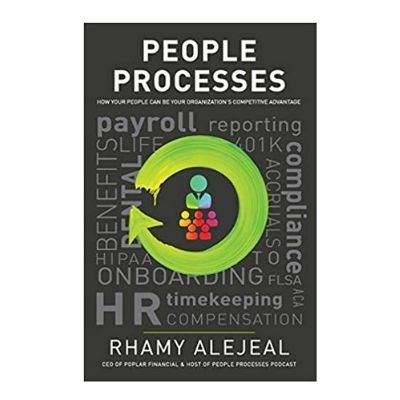
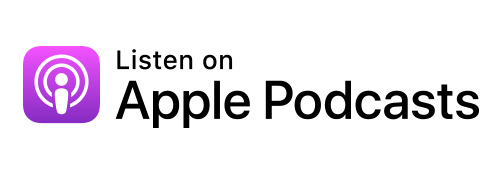

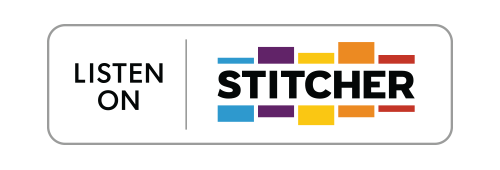


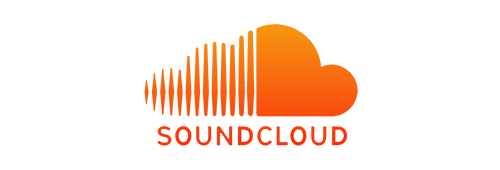

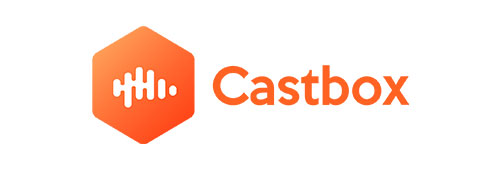
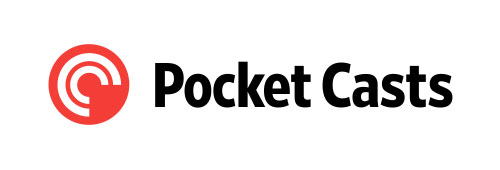
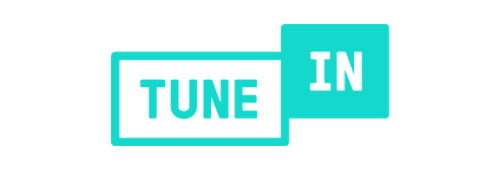
Leave a Reply